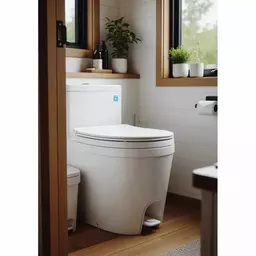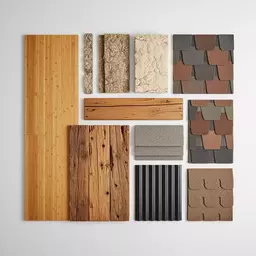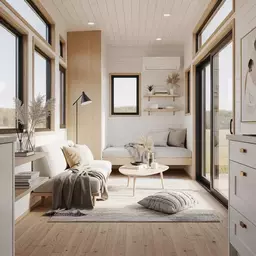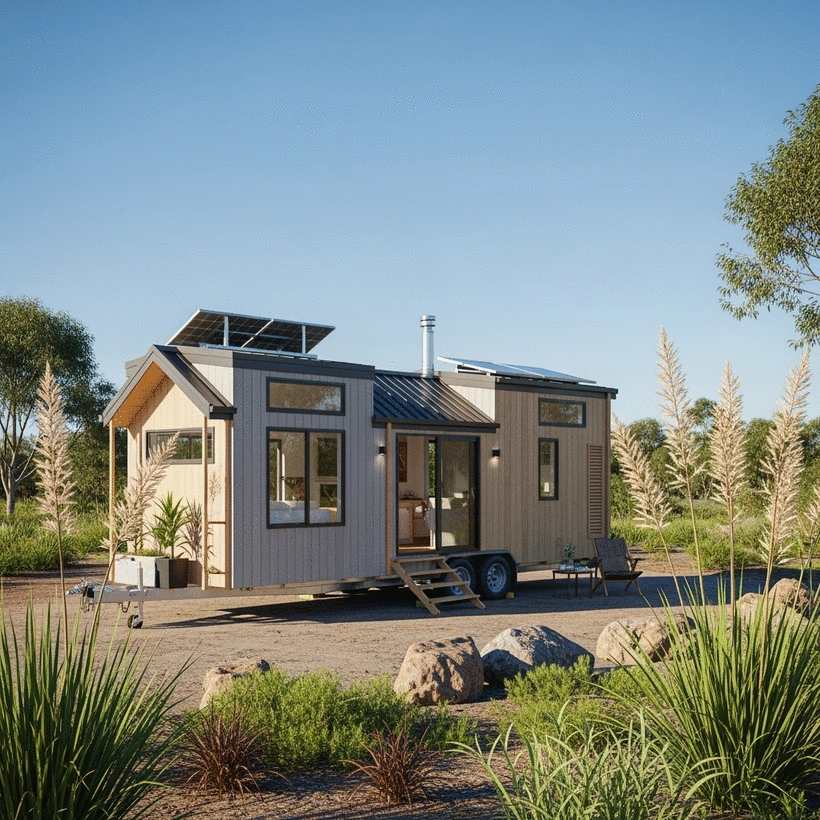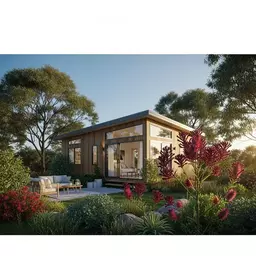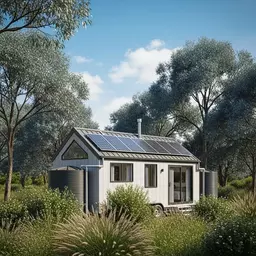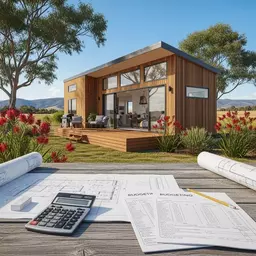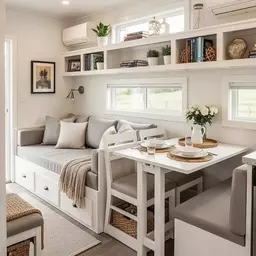2025 Tiny Home Design Ideas
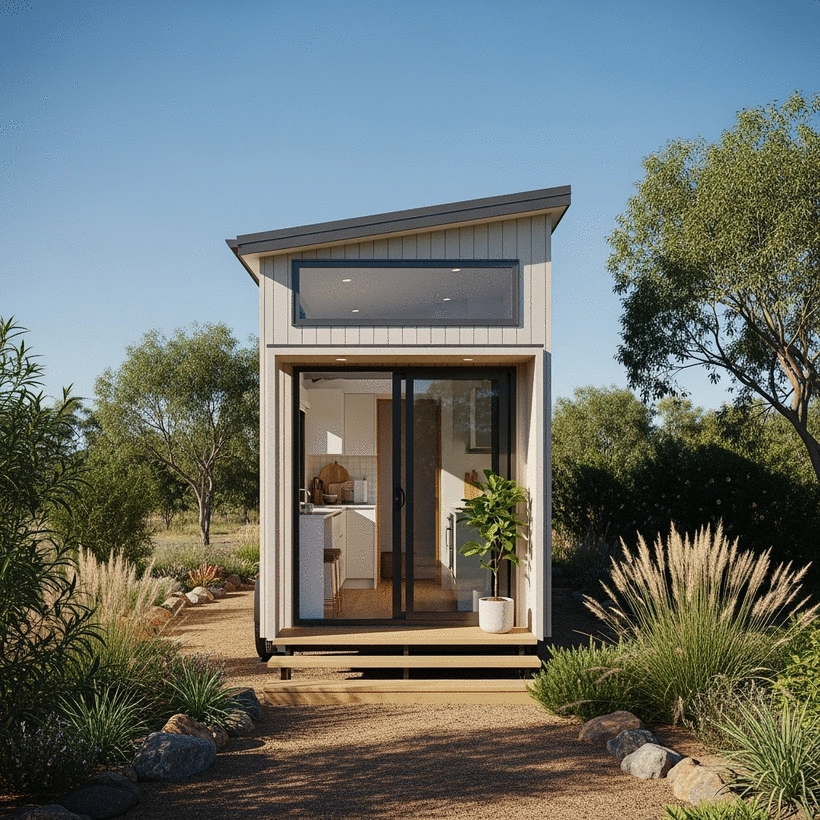
As we approach 2025, the shift towards tiny homes signals a growing movement focused on sustainability and minimalist living. With rising housing costs and environmental concerns, Australians are redefining their lifestyles by embracing compact, efficient living spaces. Ready to discover the key insights into this transformative trend?
What You Will Learn
- Tiny homes are defined as dwellings under 100 square meters that emphasize simplicity and efficiency.
- Key features include multi-functional furniture, sustainable materials, and efficient space usage, promoting a minimalist mindset.
- The popularity of tiny living in Australia is driven by affordability, flexibility, and a lower environmental impact.
- Architectural trends are evolving, focusing on innovative designs that incorporate local materials and green spaces.
- Future tiny home designs will prioritize energy efficiency with technologies like solar panels and smart appliances.
Key Trends Shaping Tiny Home Design in 2025
The future of tiny homes is being defined by a commitment to sustainability, smart technology, and innovative space-saving solutions.
Sustainable Innovations
Use of eco-friendly materials and designs that minimize environmental impact.
Smart Technology Integration
Integration of voice-controlled features and energy-efficient appliances.
Innovative Space-Saving Solutions
Implementation of multifunctional furniture and open-plan layouts.
Energy Efficiency Focus
Prioritizing technologies like solar panels, Energy Star appliances, and smart thermostats.
Understanding 2025 Tiny Home Design Trends in Australia
As we step into 2025, it’s exciting to see how the concept of tiny homes has evolved. These compact spaces are more than just miniatures of traditional houses; they represent a lifestyle shift towards simplicity and sustainability. But what exactly defines a tiny home? Typically, these are dwellings under 100 square meters that prioritize efficiency and a minimalist approach. At Luxe Tiny Homes, we believe that the key to a fulfilling life lies in embracing this concept fully.
Understanding the essence of tiny homes goes beyond their dimensions. It’s about creating a living environment that fosters connection—both to nature and to ourselves. So, are you ready to explore this transformative trend with me?
Defining the Concept of Tiny Homes
The core philosophy of tiny homes is centered around living with less while gaining more. This means that every element within these homes is intentionally designed to serve a purpose. Common features of tiny homes include:
- Multi-functional furniture, like sofa beds and fold-out tables
- Efficient use of space, often with open-concept layouts
- Sustainable materials, promoting an eco-friendly footprint
By focusing on these aspects, tiny homes are not just reducing physical space but also promoting a mindset shift towards minimalism. It's about curating a life filled with meaningful interactions and experiences rather than excess belongings.
The Growing Popularity of Tiny Living in Australia
In recent years, I’ve noticed an inspiring trend among Australians—a growing interest in tiny living. Factors like rising housing costs, environmental concerns, and a desire for a simpler lifestyle are driving this movement. Many Australians are starting to realize that true happiness doesn’t come from a sprawling home but from an efficiently designed, cozy space that meets their needs.
As a community, we’re beginning to see tiny homes pop up across urban landscapes and rural settings alike. This shift is a testament to our collective pursuit of a sustainable future. But what exactly fuels this popularity? Here are some key reasons:
- Affordability: Tiny homes are often less expensive to build and maintain
- Flexibility: Many tiny homes can easily transition to off-grid living
- Minimal environmental impact: Smaller homes mean lower resource consumption
Seeing this trend firsthand at Luxe Tiny Homes fills me with hope for the future as more individuals and families choose to embrace this lifestyle.
Exploring the Tiny House Movement and Its Impact on Australian Architecture
The tiny house movement is reshaping how we think about architecture in Australia. This movement encourages innovative designs that challenge conventional building practices, as highlighted by sources like Nelson Design Group's insights on the rise of tiny house designs. Architects and designers are now creating stunning tiny home designs that blend functionality with beauty. This evolution is not only changing the aesthetic but also promoting sustainability through the use of eco-friendly materials.
In addition, tiny homes are inspiring larger architectural trends that emphasize open spaces and natural light. This is a refreshing shift in a market that often prioritizes quantity over quality. So, what impact does this have on our urban landscapes? Research from Urban Studies journal supports the idea that tiny homes can foster community-focused developments and increase green spaces. Here are some notable effects:
- Increased focus on local materials and craftsmanship
- Integration of green spaces within urban settings
- Community-focused developments that encourage collaboration and connection
As we continue to navigate this fascinating journey, I invite you to reflect on how tiny homes might fit into your own vision for sustainable living. Are you ready to take the plunge?
Pro Tip
When designing your tiny home, consider the importance of natural light. Large windows and skylights can make your space feel more open and inviting. Not only do they enhance the aesthetic, but they also reduce the need for artificial lighting, promoting energy efficiency and a connection to the outdoors.
Summarizing Key Trends in Tiny Home Design for 2025
As we look ahead to 2025, it’s clear that the landscape of tiny home design is evolving at a remarkable pace. The trends we’re seeing reflect a growing commitment to sustainability, smart technology, and innovative space-saving solutions. It’s an exciting time for those of us passionate about creating beautiful, eco-friendly living spaces!
Here’s a quick recap of the key trends shaping tiny home design:
- Sustainable Innovations: Use of eco-friendly materials and designs that minimize environmental impact.
- Smart Technology: Integration of voice-controlled features and energy-efficient appliances.
- Space-Saving Solutions: Implementation of multifunctional furniture and open-plan layouts.
These advancements not only enhance the functionality of tiny homes but also support a more conscious lifestyle. Are you inspired by these trends? Let's explore what the future holds for tiny homes in Australia!
The Future of Tiny Homes in Australia: What to Expect
The future of tiny homes in Australia looks bright! With rising awareness around sustainability and the benefits of compact living, we can expect an increase in innovative designs and community acceptance. One exciting aspect will be the continued emergence of tiny home villages across urban areas, providing an opportunity for like-minded individuals to connect and share resources.
Additionally, as building codes evolve, more Australians will find it easier to embrace the tiny living lifestyle. The advent of smart technology will likely play a pivotal role in this, making tiny homes not just cozy but also comfortable and adaptable to various needs. The Frontiers in Public Health journal discusses how compact living can positively impact mental and physical well-being, reinforcing the benefits of this lifestyle.
Understanding the Importance of Energy Efficiency in Future Designs
Energy efficiency is set to be a cornerstone of tiny home designs moving forward. By prioritizing technologies that reduce energy consumption, we can create living spaces that are not only eco-friendly but also cost-effective. Here are some crucial aspects to consider:
- Solar Panels: Harnessing renewable energy for sustainable living.
- Energy Star Appliances: Choosing energy-efficient appliances that lower utility bills.
- Smart Thermostats: Regulating temperature for optimal comfort and efficiency.
By focusing on these energy-efficient solutions, we can reduce our ecological footprint while enjoying the many benefits of tiny home living. Embracing these practices not only enhances our living spaces but also contributes to a more sustainable future!
Frequently Asked Questions about Tiny Homes in Australia
- What defines a tiny home?
- Tiny homes are typically dwellings under 100 square meters that emphasize efficiency, minimalist living, and purposeful design.
- What are the main reasons for the growing popularity of tiny homes in Australia?
- The popularity is driven by rising housing costs, environmental concerns, the desire for a simpler lifestyle, affordability, flexibility (including off-grid living), and a minimal environmental impact.
- How does the tiny house movement impact Australian architecture?
- It encourages innovative designs, promotes the use of local and sustainable materials, inspires open spaces and natural light in larger architectural trends, and fosters community-focused developments.
- What key trends are shaping tiny home design for 2025?
- Key trends include sustainable innovations (eco-friendly materials), smart technology integration (voice control, energy-efficient appliances), and innovative space-saving solutions (multifunctional furniture, open layouts).
- Why is energy efficiency important in future tiny home designs?
- Energy efficiency is crucial for creating eco-friendly and cost-effective living spaces, utilizing technologies like solar panels, Energy Star appliances, and smart thermostats to reduce ecological footprint and utility bills.
Recap of Key Points
Here is a quick recap of the important points discussed in the article:
- Embrace Minimalism: Tiny homes encourage a lifestyle focused on simplicity and sustainability, allowing for meaningful experiences over excessive belongings.
- Innovative Design: Features like multi-functional furniture and open-concept layouts maximize space efficiency and promote eco-friendliness.
- Growing Trend: The popularity of tiny living in Australia is driven by affordability, flexibility, and a desire for reduced environmental impact.
- Architectural Shifts: The tiny house movement is inspiring new architectural trends that prioritize local materials, green spaces, and community-focused developments.
- Future Innovations: Expect continued advancements in energy efficiency, smart technology, and sustainable materials in tiny home designs moving forward.
